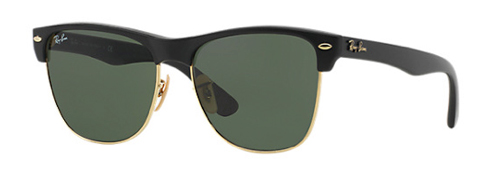Hey, when I’m wrong, I’m wrong.
I’m usually the one pointing out errors in other people’s assessments, statements, or position here in my column, but, this month I’m going to turn a big old spotlight on myself and highlight a statement of mine that, it’s turned out, is incorrect. As someone with a background in the sciences, I feel that it’s my duty to reassess my own statements in the light of new evidence, and, recently, some new evidence came to light which technically nullifies a statement I made a few months back.
So, here goes: Turns out the Monobrowline might not be as new as we think.
You remember the frame: I talked about it earlier this year, here and in print, as a frame which I felt had the potential to be one of the iconic designs of the new millennium. By taking the classic browline profile and making the bridge a contiguous part of the plastic caps rather than the chassis, the frame plays up its’ zyl components more while giving the wearer the defined, rigid “frowny face” that research has determined makes men look more dominant and, as a result, more socially desirable. I pointed out that, while it’d had a brief run in the 1980s in the form of Rayban’s Wayfarer Max, the design itself hadn’t found any real footing until recently, and spoke about Clearvision’s Marc Ecko frames in particular as heralds of an exciting new fashion trend.
Well, not quite new.
I’m always joking that my column doesn’t have any readers, but, as it turns out, it does—including frame manufacturers and some optical historians. One of them was kind enough to send me a photo documenting not only the first monobrowline, but, as it turns out, the first browline.
Ladies and gentlemen, meet The Stag.
A brief piece on The Stag was recently sent to me by Mr. Charles White, president of Shuron Optical, whom I’m pleased to count not only as a reader of 20/20 Magazine and The Optician’s Handbook, but also my column. Following my recent piece on monobrowlines, he was kind enough to contact me regarding the historical accuracy of the piece, cluing me in to an obscure but fascinating piece of 20th century optical history.

Source: www.shuron.com
The Stag, manufactured by Shuron, is interesting for a number of reasons, historically and design-wise. It’s not only the forerunner to the monobrowline frames of today, but served as the prototype for the Shuron Ronsir, what the world would come to know as the quintessential browline frames. Despite the frame’s progeny, and the fact that, per Shuron, it sold reasonably well, the frame didn’t quite have a profound impact on the optical world. It’s difficult to say why, exactly, especially considering just how popular the very similarly styled browline would become—and how popular the similarly styled fade would become just a few years later. It even makes more sense, from a fashion and aesthetics standpoint, for the Stag to have been the bigger success: It was more similar to the Rimway styled frames which had been the frame of the 1930s, including a similar lens shape and screw mounting system, with just enough difference (the bold plastic upper as opposed to the thin wire of the Rimway) to make it a fashion statement. The lack of the bottom eyewire would be even less conspicuous than the metal chassis on the browline, making it an even lighter weight and demure frame. Who’s to say? Maybe people wanted something a little different. Maybe the customizability of the browline spoke more to a generation of men wanting to break away from the conformity of military life. Maybe it was just that finicky and unpredictable phenomenon known as “the tastes of the American consumer.”

It’s a testament to the ephemeral quality of the Stag that it’s nearly impossible to find on collector’s sites or eBay, and that it took nearly half a century for the design to be attempted again on a large scale with Rayban’s Wayfarer Max (covered in my Monobrowline article). It’s impossible to say if Ray-Ban even took any inspiration from Shuron in the manufacture of the Wayfarer Max, or if it was just a happy accident resulting from the fusion of the company’s two best-selling frames. Nevertheless, innovators deserve their due recognition, so, let’s hear it for the Stag. Welcome back to the Spotlight: It’s finally time for you to enjoy your place in the sun.

Preston Fassel was born in Houston, Texas and grew up between St. Charles, Missouri and Broken Arrow, Okla.
In 2009, Preston graduated Summa Cum Laude with a degree in Liberal Arts. In 2011, he graduated Cum Laude from Sam Houston State University with a Bachelor's of Science.
Preston currently works as an Optician in the Houston area. His interest in the history of eyewear goes back to his time in high school, when he developed an interest in all things vintage.
In addition to his writing for The 20/20 Opticians Handbook and 20/20 Magazine, Preston is a featured writer for Rue Morgue Magazine, where he reviews of horror and science-fiction DVDs. His fiction writing has been featured three times in Swirl magazine, the literary arts journal of Lone Star College and Montgomery County. He is the author of the definitive work on the life of British horror actress Vanessa Howard, Remembering Vanessa, which appeared in the Spring 2014 edition of Screem Magazine.











